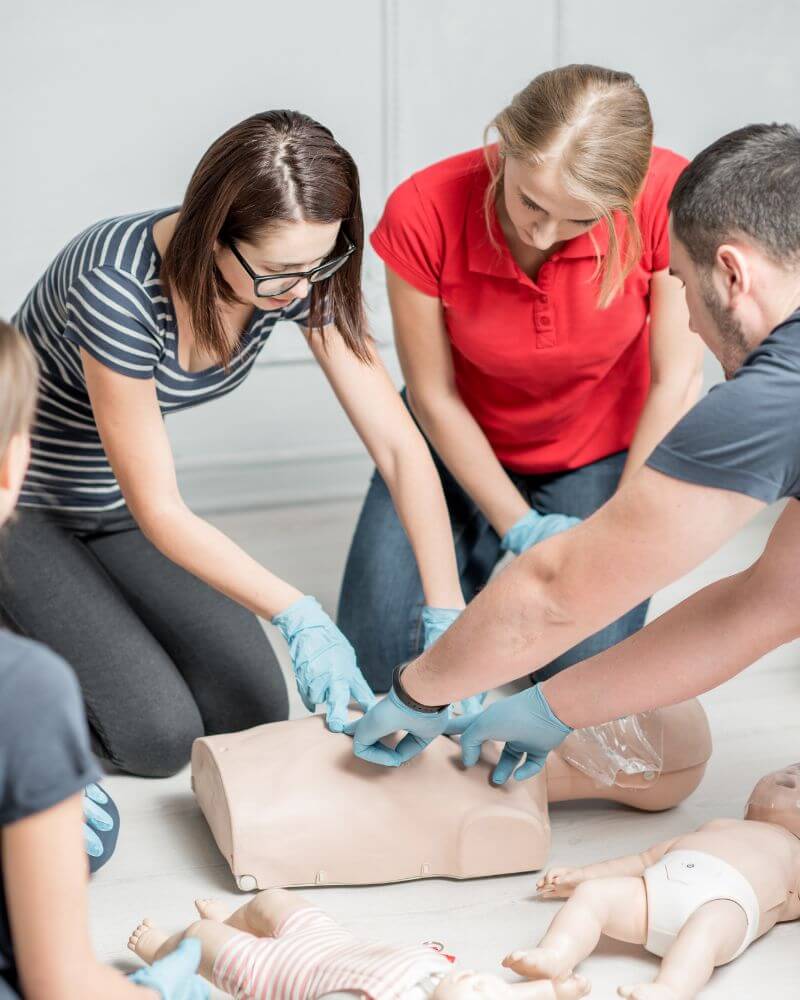Introduction
In today's hectic globe, the capacity to respond successfully in an emergency can make all the difference between life and fatality. One critical ability that every person must have is Cardiopulmonary Resuscitation (CPR). This write-up dives deep into The Importance of mouth-to-mouth resuscitation Accreditation: What You Required to Know, highlighting why acquiring a CPR qualification is not just advantageous yet crucial for any individual looking to make certain safety in their community.
The Value of CPR Certification: What You Required to Know
When it involves conserving lives, knowledge is power. CPR is an important ability that can be learned with different first aid courses With cardiac arrest being one of the leading causes of death around the world, having mouth-to-mouth resuscitation expertise can considerably increase survival rates. According to the American Heart Organization, instant CPR can increase or perhaps triple a sufferer's possibility of survival.
But exactly what does mouth-to-mouth resuscitation involve? It's a mix of upper body compressions and rescue breaths designed to keep blood flow and oxygenation during cardiac emergency situations. While lots of people think CPR is just necessary for healthcare experts, the truth is that anybody can take advantage of discovering this possibly life-saving skill.
What Does mouth-to-mouth resuscitation Certifcation Entail?
CPR certification typically entails completing a training program that covers various skills, consisting of:
- Recognizing cardiac arrest symptoms Performing top notch chest compressions Administering rescue breaths Using an Automated External Defibrillator (AED)
These skills are frequently shown along with first aid courses, offering a comprehensive understanding of how to react in emergencies.
Why You Must Get Certified
Life-Saving Skills: The most engaging factor for obtaining your mouth-to-mouth resuscitation certification is the capability to conserve lives. Having these abilities prepares you for emergency situations at home, at work, or in public spaces.
Confidence Boost: Understanding how to do CPR can improve your confidence when confronted with an emergency circumstance. This guarantee allows you to act emphatically as opposed to freeze under pressure.
Career Opportunities: Lots of companies look favorably upon candidates with accreditations in first aid and CPR. Fields such as health care, education, and sports mentoring usually call for these credentials.
Community Effect: When much more individuals are learnt mouth-to-mouth resuscitation, neighborhoods become safer areas. Picture going to a public event where many individuals recognize how to carry out CPR; the probability of reliable treatment enhances exponentially.

Renewal and Continual Learning: The majority of certifications require renewal every two years or so, ensuring that individuals stay upgraded on ideal methods and any type of adjustments in guidelines.

What Are Your Choices for Training?
There are many methods available for obtaining your mouth-to-mouth resuscitation accreditation:
Online Courses
Online training courses have gotten popularity as a result of their comfort. You can find out at your own pace without geographical constraints.
In-Person Classes
In-person courses offer hands-on experience under expert guidance, which can be invaluable when it comes time to use your skills in real-life situations.
Combination Programs
Some companies offer hybrid programs that combine on the internet theory with hands-on method sessions.
Finding the Right First Aid Course
When picking a training program, think about aspects like place, cost, duration, and credibility of the establishment supplying the training course. Seek certified companies acknowledged by authorities like the American Heart Association or Red Cross.
How Often Ought to You Revitalize Your Certification?
Most accreditations suggest renewing every 2 years. Continuous technique makes certain abilities stay sharp and updated with present guidelines.
Frequently Asked Inquiries (Frequently asked questions)
1. What Is Consisted of in a First Aid Course?
A normal first aid course covers abilities such as wound treatment, choking relief techniques, standard life assistance (BLS), and how to utilize an AED alongside mouth-to-mouth resuscitation training.

2. How Lengthy Does It Take To Get Certified?
Most training courses last in between 4-8 hours for initial accreditation and may take less time for renewal courses as a result of prior knowledge.
3. Is Online Certification Valid?
First Aid Course CanberraYes! As long as the course is approved by identified bodies like AHA or Red Cross.
4. Can I Use My Emergency Treatment Certification Internationally?
It depends upon the nation's laws; however, several areas recognize qualifications from reputable organizations worldwide.
5. Are There Age Restrictions for Taking a Course?
Generally no; people as young as 12 can take most emergency treatment programs with parental consent.
6. Do Firms Deal Team Price Cuts for Training?
Many companies do offer price cuts for team bookings which makes it much easier for organizations wanting to train several employees simultaneously.
Conclusion
Learning mouth-to-mouth resuscitation is not just a choice; it's a commitment we owe ourselves and our neighborhoods. The relevance of being prepared can not be overstated-- having your qualification equips you with life-saving skills that might make all the distinction during emergency situations. By enrolling in a reputable emergency treatment course that consists of extensive training on both first aid techniques and CPR treatments, you're taking proactive actions towards becoming an important property in dilemma situations.
As we have actually discovered throughout this write-up labelled "The Importance of CPR Qualification: What You Required to Know," it's clear that having these skills enhances not just individual confidence however likewise neighborhood security in general-- producing a ripple effect where readiness becomes second nature among all of us! So why wait? Sign up today!